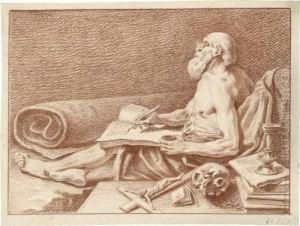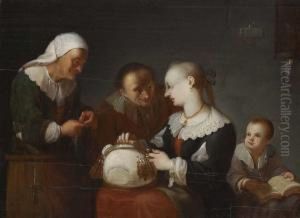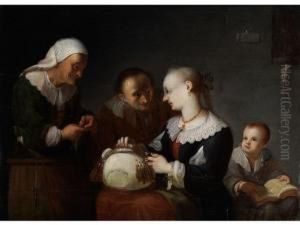Daniel Preissler Paintings
Daniel Preissler was a German painter, draftsman, and engraver who was active during the late 17th century and early 18th century. Born in 1666 in Nuremberg, Germany, Preissler came from a family with a strong artistic tradition. His father, Johann Daniel Preissler, was an esteemed painter and engraver, and his influence undoubtedly shaped young Daniel's artistic education and career.
Daniel Preissler's style was deeply rooted in the Baroque tradition, which was characterized by its dramatic use of light, rich color palettes, and dynamic compositions. He was known for his meticulous attention to detail and his ability to capture textures and nuances in his subjects. His work encompassed religious themes, allegorical scenes, and portraits – a testament to his versatility as an artist.
Preissler's contributions to the arts extend beyond his paintings and engravings. He was also an influential teacher, becoming the director of the newly founded Nuremberg Drawing Academy in 1662, an institution that had a significant impact on the artistic landscape of the region. This role allowed him to shape the next generation of artists and disseminate the Baroque style.
Throughout his career, Preissler remained largely based in Nuremberg, a city that was an important center for art and culture during his lifetime. He was deeply involved in the artistic community there and collaborated with other prominent artists of the era. Despite the prominence he achieved during his lifetime, Daniel Preissler's work was later somewhat overshadowed by other Baroque artists, and he isn't as widely recognized today outside of specialist circles.
Daniel Preissler passed away in 1737 in Nuremberg, leaving behind a legacy that is preserved in his contributions to the Baroque movement in Germany and his influence as an educator of the arts. His works continue to be studied for their embodiment of the Baroque spirit and their place in the rich tapestry of German art history.


